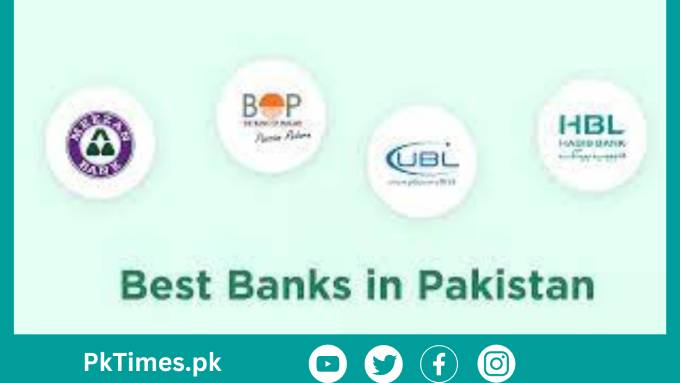Pakistan, a country of rich cultural heritage and diverse landscapes, is facing significant economic challenges that have sparked concerns about the possibility of default. In this blog, we delve into Pakistan‘s economic indicators, debt burden, policy responses, and international support mechanisms to assess the likelihood of default and explore potential mitigation strategies.
Economic Overview of Pakistan:
Pakistan’s economy has experienced periods of growth and turbulence, influenced by factors such as political instability, security concerns, and external shocks. Despite efforts to stimulate growth and improve fiscal management, the country continues to grapple with issues such as high inflation, fiscal deficits, and a heavy debt burden. Key economic indicators, including GDP growth, inflation rates, and fiscal deficits, provide insights into Pakistan’s economic health and resilience.
Debt Burden and External Obligations:
Pakistan’s debt burden, both domestic and external, has raised concerns about debt sustainability and servicing obligations. With rising debt levels and debt servicing costs consuming a significant portion of government revenues, the country faces challenges in meeting its financial obligations. External financing, including loans from international financial institutions and bilateral partners, has become crucial to bridge financing gaps and maintain foreign reserves.
Impact of COVID-19 Pandemic:
The COVID-19 pandemic has exacerbated Pakistan’s economic challenges, disrupting economic activities, straining healthcare systems, and causing widespread socio-economic hardship. Government responses, including lockdown measures, fiscal stimulus packages, and social assistance programs, have aimed to mitigate the pandemic’s impact. However, the economic fallout, including revenue losses, increased spending, and reduced remittances, has further strained Pakistan’s finances.
Policy Responses and International Support:
In response to economic challenges, the Pakistani government has implemented policy measures to stabilize the economy, including fiscal reforms, revenue enhancement initiatives, and austerity measures. International support mechanisms, such as loans, grants, and debt restructuring initiatives, have provided temporary relief and liquidity support. However, long-term sustainability requires comprehensive reforms addressing structural weaknesses and promoting inclusive growth.
Potential Scenarios and Risk Factors:
The possibility of default depends on various factors, including debt sustainability, economic growth prospects, and external financing availability. While efforts to address fiscal imbalances and structural reforms can mitigate default risks, factors such as geopolitical tensions, global economic conditions, and policy uncertainties pose significant risks. Proactive measures and prudent fiscal management are essential to navigate these challenges.
Mitigation Strategies and Reform Agenda:
To address default risks and promote economic stability, Pakistan must prioritize structural reforms aimed at enhancing fiscal sustainability, improving governance, and fostering inclusive growth. Strengthening revenue mobilization, enhancing public expenditure efficiency, and promoting private sector-led investment are critical components of the reform agenda. Additionally, enhancing social protection mechanisms and investing in human capital development can foster resilience and reduce vulnerability to economic shocks.
Conclusion:
In conclusion, while the specter of default looms over Pakistan’s economy, proactive measures and reform efforts offer avenues for resilience and recovery. By addressing fiscal imbalances, enhancing governance, and promoting sustainable growth, Pakistan can mitigate default risks and lay the foundation for long-term economic stability and prosperity. In a rapidly changing global landscape, informed policy decisions and collaborative efforts are crucial to navigate the challenges ahead and realize Pakistan’s economic potential.
FAQ’s
- What are the primary factors contributing to Pakistan’s heavy debt burden and default risk?
- Pakistan’s heavy debt burden and default risk stem from various factors, including persistent fiscal deficits, reliance on external borrowing to finance budgetary gaps, and structural weaknesses in revenue generation and expenditure management. Additionally, economic challenges exacerbated by factors such as the COVID-19 pandemic, security concerns, and political instability have further strained Pakistan’s finances, raising concerns about debt sustainability and servicing obligations.
- How effective have government policy responses and international support been in addressing Pakistan’s economic challenges and mitigating default risks?
- Government policy responses, including fiscal reforms, austerity measures, and social assistance programs, have aimed to stabilize Pakistan’s economy and mitigate default risks. Similarly, international support mechanisms such as loans, grants, and debt restructuring initiatives have provided temporary relief and liquidity support. However, the effectiveness of these measures in addressing Pakistan’s long-term economic challenges and reducing default risks depends on the implementation of comprehensive structural reforms aimed at enhancing fiscal sustainability, promoting inclusive growth, and improving governance.
- What are some potential scenarios and risk factors that could exacerbate Pakistan’s default risk, and how can the country mitigate these risks?
- Potential scenarios and risk factors that could exacerbate Pakistan’s default risk include geopolitical tensions, global economic downturns, and policy uncertainties. To mitigate these risks, Pakistan must prioritize structural reforms aimed at strengthening fiscal sustainability, enhancing revenue mobilization, and promoting private sector-led investment. Additionally, fostering resilience through social protection mechanisms, investing in human capital development, and promoting inclusive growth can reduce vulnerability to economic shocks and enhance Pakistan’s ability to navigate challenging economic conditions.


